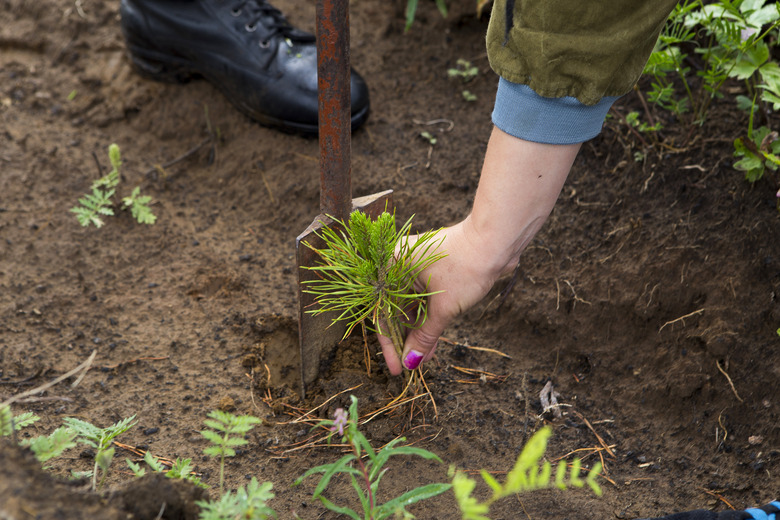What Is The Time Of The Year To Plant Pine Trees?
The best time of the year to plant pine trees depends largely on where you live and the climate in which you're planting the trees. For many areas, planting pine trees (Pinus spp.) between December and mid-March is acceptable with February being ideal, as long as the soil is moist enough. Getting the timing right for planting trees can mean the difference between your pine trees thriving and dying.
Tip
In many areas, planting pine trees between December and mid-March is best with February being ideal. Plant the tree when the soil is moist to prevent the seedling's roots from drying.
Plant Hardiness Zones
Plant Hardiness Zones
Depending on species and cultivar, pine trees are perennials in USDA plant hardiness zones 2 through 8. These zones indicate relatively mild winters where the temperature doesn't fall much below minus 10 degrees Fahrenheit and doesn't go much higher than 90 F. Well-established pine trees are better able to tolerate slightly colder or warmer temperatures than those extremes.
Planting Times for Pine Trees
Planting Times for Pine Trees
Specific planting times can vary depending on your local conditions. It's typically best to plant pine trees early before the growing season. However, you don't want to plant when there's a risk of freezing weather, as it can kill tender pine seedlings. Consult a local forester, your state forest service, or your local cooperative extension service to get personalized advice for your location.
In many areas, planting between December and March is safe as long as the seedling won't endure freezing conditions. February and March are often the best months. In colder climates, you might need to wait until April or May.
Soil and Weather Conditions
Soil and Weather Conditions
Avoid planting in freezing conditions or when the ground is still frozen. It's also best to wait until the soil has received enough rain to be moist. If the soil is extremely dry, the roots can dry out and die. Choose a cool, cloudy day for planting to protect the seedlings. It's also best to avoid windy days, as the wind can dry out the shallow roots of newly planted pines.
Short Storage Times
Short Storage Times
When you receive your pine seedlings, it's best to plant them as soon as possible. If you can't plant them immediately, protect them from heat, sunlight, wind and freezing temperatures. Keeping the seedlings in cold storage or in a shed where they're protected from sun and wind until you can plant them is ideal. Be sure to keep them lightly watered if they're in a location sheltered from rainfall. Plan your planting time to coordinate with the delivery of your pine seedlings for the best results.
Planting Nursery Trees
Planting Nursery Trees
For the best results, buy new pine tree seedlings either from a reputable garden center or a trusted mail-order seed company. The roots of the new nursery trees will be enclosed in a rich growing medium and wrapped in burlap or the plant will be growing in a pot. Their well-established root systems ensure that the trees are healthy and will do well once planted. These plants are processed during the dormant season, mainly early fall to early winter, so they do best if placed in the ground during a period of dormancy.
Planting Mail-Order Trees
Planting Mail-Order Trees
Most trees purchased either from a catalog or online are shipped with no dirt attached to their roots. It's important to put these bareroot seedlings into water right away and to keep their roots, the most important part of the saplings, moist until they are ready to be planted. The general rule is, the less stress to the plant, the better.
Transplanting Wild Pines
Transplanting Wild Pines
With so many pine trees growing wild, it would seem to make sense to just borrow a few from Mother Nature. This is a little trickier than planting nursery-grown pine trees. The drawback in transplanting trees from the wild is that it is rarely possible to dig up the entire root system. But it can be done if you select small seedlings and dig up as much of the root as possible with a sturdy shovel, keep the roots moist, replant them in the late summer or early fall, and hope for the best.
